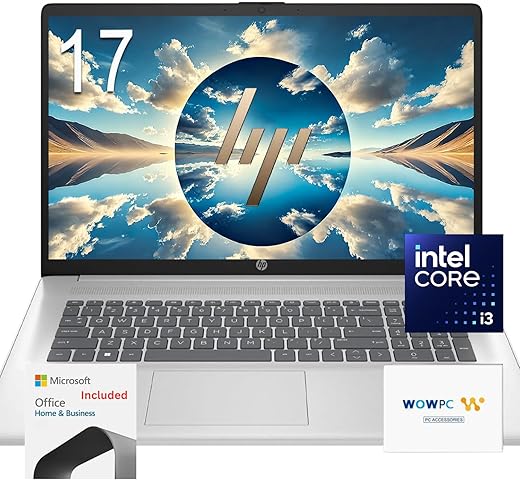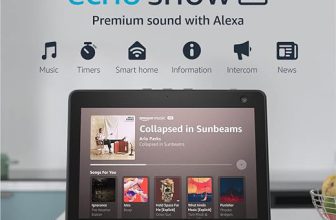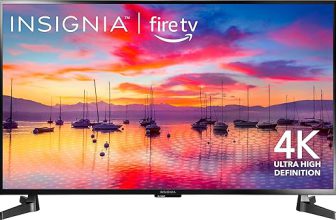
In today’s fast-paced digital world, choosing the right laptop can feel overwhelming, especially with so many options available. Ultrabooks have gained popularity for their sleek designs, lightweight portability, and impressive performance, making them an appealing choice for on-the-go professionals and students alike. However, their premium price tag often raises questions about their true value. In this blog post, I will dive into a cost-benefit analysis of Ultrabooks, exploring whether their features and benefits justify the investment compared to traditional laptops. If you’re considering an Ultrabook or simply curious about the value they offer, I invite you to join me in this exploration.



Understanding Ultrabooks
Ultrabooks represent a unique category of laptops that blend high performance with portability. Designed to cater to the needs of professionals, students, and tech enthusiasts alike, Ultrabooks are characterized by their sleek designs, lightweight builds, and impressive battery life. This section will delve into what constitutes an Ultrabook, its specifications, origins, and evolution in response to consumer demands.



What Are Ultrabooks?
Introduced by Intel in 2011, Ultrabooks are thin, lightweight laptops that offer a balance between performance and portability. They are primarily defined by several key specifications:
Specifications and Distinguishing Features
- Size and Weight: Ultrabooks are typically less than 0.8 inches thick and weigh around 3 pounds (1.36 kg) or less. This makes them easy to carry, ideal for on-the-go productivity.
- Battery Life: A hallmark of Ultrabooks is their impressive battery life, often exceeding 8 hours on a single charge. Many models, like the Dell XPS 13, boast battery life of up to 12 hours, making them suitable for all-day use without needing a power outlet.
- Hardware Requirements:
- Processor: Ultrabooks are powered by Intel Core i5 or i7 processors, focusing on energy efficiency and performance.
- Storage: Most come equipped with solid-state drives (SSDs) for faster data access and boot times, with storage capacities ranging from 256 GB to 1 TB.
- RAM: Typically, Ultrabooks are configured with a minimum of 8 GB of RAM, which is expandable in some models, to ensure smooth multitasking.
Comparison Table of Popular Ultrabooks
| Model | Weight | Thickness | Battery Life | Processor | Storage |
|---|---|---|---|---|---|
| Dell XPS 13 | 2.8 lbs | 0.58 in | Up to 12 hrs | Intel Core i7-1165G7 | 512 GB SSD |
| HP Spectre x360 | 2.87 lbs | 0.67 in | Up to 10 hrs | Intel Core i7-1165G7 | 1 TB SSD |
| Lenovo ThinkPad X1 Carbon | 2.4 lbs | 0.62 in | Up to 15 hrs | Intel Core i7-1165G7 | 512 GB SSD |
| Asus ZenBook 14 | 2.6 lbs | 0.55 in | Up to 10 hrs | Intel Core i7-1165G7 | 1 TB SSD |
Origins of the Ultrabook Category
The Ultrabook category was born from the need for more portable, powerful laptops that could compete with Apple’s MacBook Air. Intel aimed to create a new standard that would promise consumers a lightweight device without sacrificing the performance typically associated with larger laptops.
The original vision for Ultrabooks was rooted in the development of the Intel “Sandy Bridge” processors, which provided the necessary power efficiency and computational capabilities. This initiative quickly gained traction, and manufacturers began to innovate, producing various models that adhered to Intel’s specifications.
Evolution to Meet Consumer Demands
As consumer needs evolved, so too did the Ultrabook. Initially focused on sleek designs and portability, manufacturers began to enhance performance capabilities, integrate advanced graphics, and improve connectivity options.
Key Developments
- Improved Graphics: Modern Ultrabooks now often feature integrated Intel Iris Xe graphics, allowing for casual gaming and graphic-intensive tasks without the need for dedicated GPUs.
- Enhanced Connectivity: With the advent of USB-C and Thunderbolt 3, Ultrabooks have improved their connectivity options, making it easier to connect to external displays and peripherals. For example, the HP Spectre x360 offers multiple USB-C ports, making it versatile for various setups.
- Diverse Form Factors: The introduction of 2-in-1 designs, such as the Lenovo Yoga series, has allowed Ultrabooks to offer greater flexibility, transitioning between laptop and tablet modes seamlessly.
Practical Examples
Several brands have established themselves as leaders in the Ultrabook market, each offering unique features:
- Dell XPS 13: Known for its nearly borderless InfinityEdge display, it combines aesthetics with performance, making it popular among professionals.
- HP Spectre x360: This model stands out for its premium design and convertible functionality, appealing to users who appreciate versatility and style.
- Lenovo ThinkPad X1 Carbon: Renowned for its robust build and exceptional keyboard, this Ultrabook is often favored by business users due to its reliability and performance.
In summary, Ultrabooks continue to evolve in response to technological advancements and changing consumer preferences, consistently providing a blend of performance, portability, and style.
Cost Analysis of Ultrabooks
Ultrabooks have become a popular choice for users seeking a blend of portability, performance, and premium features. However, the cost associated with these sleek devices often raises questions, especially when compared to traditional laptops. This section delves into the price range of Ultrabooks, breaking down the costs associated with build quality, hardware specifications, and brand reputation, while providing concrete examples of popular models.



Price Range Comparison
When we talk about Ultrabooks, we typically refer to laptops that meet specific criteria set by Intel, including thin design, long battery life, and robust performance. The price range for Ultrabooks usually spans from $800 to over $2,000, depending on the features and specifications.
In contrast, traditional laptops can be found at much lower price points, often ranging from $300 to $1,000. The significant difference in price can be attributed to several factors unique to Ultrabooks.
Cost Breakdown of Ultrabooks
- Build Quality
- Materials: Ultrabooks often utilize high-end materials like aluminum and carbon fiber, which contribute to their lightweight and durable designs. This superior build quality can increase manufacturing costs.
- Design: The engineering behind Ultrabooks focuses on slim profiles and lightweight structures, which requires more advanced manufacturing techniques.
- Hardware Specifications
- Processors: Ultrabooks typically come equipped with the latest processors, such as Intel’s Core i5 or Core i7, which offer better performance and power efficiency compared to the lower-end processors found in many traditional laptops.
- RAM and Storage: Most Ultrabooks start with at least 8GB of RAM and offer faster SSD storage, which enhances speed and performance. Traditional laptops may come with less RAM and slower HDDs.
- Brand Reputation
- Brands that manufacture Ultrabooks often carry a reputation for quality and innovation, such as Dell, HP, Lenovo, and Apple. This brand equity can justify higher prices.
Popular Ultrabook Models and Their Prices
To illustrate the cost landscape, here are some popular Ultrabooks along with their price points and key specifications:
| Model | Price | Processor | RAM | Storage | Weight |
|---|---|---|---|---|---|
| Dell XPS 13 | $999 | Intel Core i5 | 8GB | 256GB SSD | 2.7 lbs |
| HP Spectre x360 | $1,199 | Intel Core i7 | 16GB | 512GB SSD | 2.88 lbs |
| Lenovo ThinkPad X1 Carbon | $1,499 | Intel Core i7 | 16GB | 512GB SSD | 2.48 lbs |
| Apple MacBook Air (M1) | $999 | Apple M1 Chip | 8GB | 256GB SSD | 2.8 lbs |
| ASUS ZenBook 14 | $849 | Intel Core i5 | 8GB | 512GB SSD | 2.6 lbs |
Key Points to Consider
- Portability: Ultrabooks are designed for users who value mobility and often weigh significantly less than traditional laptops.
- Performance: The superior hardware in Ultrabooks results in faster performance, making them a better fit for demanding tasks such as video editing or multi-tasking.
- Battery Life: Ultrabooks typically feature longer battery life, often exceeding 10 hours, which is a critical factor for on-the-go users.
Benefits of Ultrabooks
Ultrabooks have gained significant popularity over the years, especially among professionals, students, and creatives. Their sleek design and powerful performance make them an attractive choice for anyone seeking a reliable and portable computing solution. Below, we delve into the numerous advantages of Ultrabooks, illustrating how they cater to specific user needs.
Performance
One of the standout features of Ultrabooks is their impressive performance. These devices are often equipped with the latest processors, such as Intel’s Core i5 and i7 series, which ensure that tasks can be completed swiftly. For instance, the Dell XPS 13 and the HP Spectre x360 come with high-performance CPUs and ample RAM, allowing users to multitask efficiently.
Key Performance Features:
- Fast Boot Times: Ultrabooks utilize solid-state drives (SSDs) that significantly reduce boot times and enhance overall responsiveness.
- Smooth Multitasking: With 8GB to 16GB of RAM, users can easily switch between applications without experiencing lag.
- Graphics Capability: Many Ultrabooks, like the Razer Blade Stealth, offer optional dedicated graphics cards, making them suitable for light gaming and graphic design.
Battery Life
Battery life is another crucial benefit of Ultrabooks. Users often need devices that can last throughout their busy days without constantly searching for an outlet. Models such as the Lenovo ThinkPad X1 Carbon are known for their long battery life, offering up to 15 hours on a single charge.
Battery Life Highlights:
- All-Day Use: Most Ultrabooks provide around 8 to 12 hours of battery life, perfect for users on the go.
- Quick Charging: Many models support fast charging, allowing users to power up their devices in a short amount of time.
- Energy Efficiency: The latest processors are designed for low power consumption, which complements the overall battery longevity.
Portability
Portability is a defining characteristic of Ultrabooks. Their lightweight design and slim profiles make them easy to carry, whether you are commuting to work, attending classes, or traveling. The Asus ZenBook 14, for example, weighs just 2.5 pounds and is under 0.6 inches thick, making it an ideal choice for those who prioritize mobility.
Portability Attributes:
- Lightweight Design: Most Ultrabooks weigh between 2 to 3 pounds, making them easy to slip into a backpack or briefcase.
- Compact Size: The sleek form factor allows for easy handling and use in tight spaces, like airplanes or crowded coffee shops.
- Durability: Many Ultrabooks are built with robust materials, such as aluminum, enhancing their ability to withstand daily wear and tear.
Design Aesthetics
The design of Ultrabooks is often as impressive as their performance. Manufacturers pay close attention to aesthetics, crafting devices that are not only functional but also visually appealing. The Microsoft Surface Laptop 4 stands out with its premium materials and minimalist design, making it a favorite among professionals and students alike.
Design Highlights:
- Premium Build Quality: Ultrabooks often feature high-end materials such as aluminum or carbon fiber, providing both style and durability.
- High-Resolution Displays: Many models offer stunning displays with vivid colors and high resolutions, ideal for creative work and media consumption.
- Variety of Colors: Users can choose from various finishes and colors, allowing for personal expression in their tech choices.
User-Centric Benefits
Different users have specific needs that Ultrabooks fulfill effectively. Here’s how Ultrabooks cater to various demographics:
Business Professionals
- Efficiency: Quick startup times and excellent multitasking capabilities enhance productivity.
- Portability: Lightweight and thin designs facilitate travel between meetings and business trips.
User Experience: “I rely heavily on my HP Spectre x360 for client presentations, and its performance never disappoints. I can easily carry it with me wherever I go.” – Sarah, Marketing Executive
Students
- Affordability: Many Ultrabook models are competitively priced, making them accessible for students.
- Battery Life: Long-lasting batteries ensure that students can attend classes and study sessions without needing to recharge frequently.
User Experience: “My Dell XPS 13 has been a game changer for my studies. I can take it to class, and it lasts all day without needing a charge.” – Jake, College Student
Creatives
- High-Quality Displays: Ultrabooks often feature excellent displays, essential for graphic design and video editing.
- Performance: The ability to run demanding software like Adobe Creative Suite without lag is a significant advantage.
User Experience: “The Razer Blade Stealth allows me to edit videos seamlessly. The display is vibrant, and the performance is top-notch, making it perfect for my creative projects.” – Lisa, Filmmaker
Comparison Table of Popular Ultrabooks
| Ultrabook Model | Weight | Battery Life | Display Type | Processor | Price Range |
|---|---|---|---|---|---|
| Dell XPS 13 | 2.8 lbs | Up to 12 hrs | FHD / 4K | Intel Core i5/i7 | $999 – $1,899 |
| HP Spectre x360 | 2.87 lbs | Up to 15 hrs | FHD / 4K | Intel Core i5/i7 | $1,099 – $1,899 |
| Lenovo ThinkPad X1 Carbon | 2.5 lbs | Up to 15 hrs | WQHD / FHD | Intel Core i5/i7 | $1,199 – $2,199 |
| Asus ZenBook 14 | 2.5 lbs | Up to 12 hrs | FHD | Intel Core i5/i7 | $849 – $1,299 |
| Microsoft Surface Laptop 4 | 2.79 lbs | Up to 19 hrs | PixelSense Display | Intel Core i5/i7 | $999 – $2,199 |
With their blend of performance, battery longevity, portability, and elegant design, Ultrabooks have become an essential tool for various user groups. Whether for business, education, or creative endeavors, the advantages of Ultrabooks are hard to overlook.
Evaluating Value Beyond the Price Tag
In conclusion, the decision to invest in an Ultrabook hinges on a careful evaluation of its advantages and disadvantages relative to its price. Throughout this analysis, I’ve highlighted the key benefits, including their portability, performance, and sleek design, which make them ideal for professionals and students on the go. However, the higher price point and potential compromises in upgradeability and repairability are important factors to consider.
For consumers contemplating an Ultrabook purchase, it’s crucial to reflect on personal needs and specific usage scenarios. If mobility, battery life, and a premium build are top priorities, an Ultrabook may be well worth the investment. Conversely, those who require more powerful hardware for gaming or intensive tasks might find better value in traditional laptops. Ultimately, aligning the choice with individual requirements will ensure a satisfactory investment in technology.







I had a great experience with the HP Spectre x360. It’s versatile, and the touch screen is a game changer for me. Anyone else love theirs?
Awesome to hear! The HP Spectre x360 is definitely a crowd favorite for its 2-in-1 functionality. I’ll highlight some success stories like yours in the article!
Absolutely! Ultrabooks are typically thinner, lighter, and more portable than traditional laptops, with a focus on battery life and performance. I’ll add more details in the article for clarity!
Could you expand on the battery life aspect? How do Ultrabooks compare to regular laptops in real-world usage?
Great question! Generally, Ultrabooks are designed for longer battery life, often lasting over 10 hours on a single charge, but I’ll make sure to include some specific comparisons in the article.
I think Ultrabooks are way overpriced for what they offer. You can get a gaming laptop for the same price with better specs. What do you all think?
I use my Ultrabook for graphic design, and the lightweight design makes it super easy to carry around to client meetings. Just love it!
I recently got a Dell XPS 13 and it’s amazing! The screen quality is top-notch. Anyone else have suggestions for Ultrabooks with great displays?
What about durability? I’ve heard that Ultrabooks can be a bit fragile. Are they worth the investment if they can’t handle a bit of rough use?
That’s a valid concern! While many Ultrabooks are built with premium materials, they can be less rugged than traditional laptops. I’ll make sure to address this in the article.
Hey, can you dive deeper into what exactly makes an Ultrabook different from a standard laptop? I’m curious about the specs!
Just a tip for those considering an Ultrabook: definitely check out the Lenovo Yoga series. They’ve got some great models that balance price and performance!
Thanks for the recommendation! The Lenovo Yoga series is indeed popular for its flexibility and value. I’ll make sure to include it in the tips section!